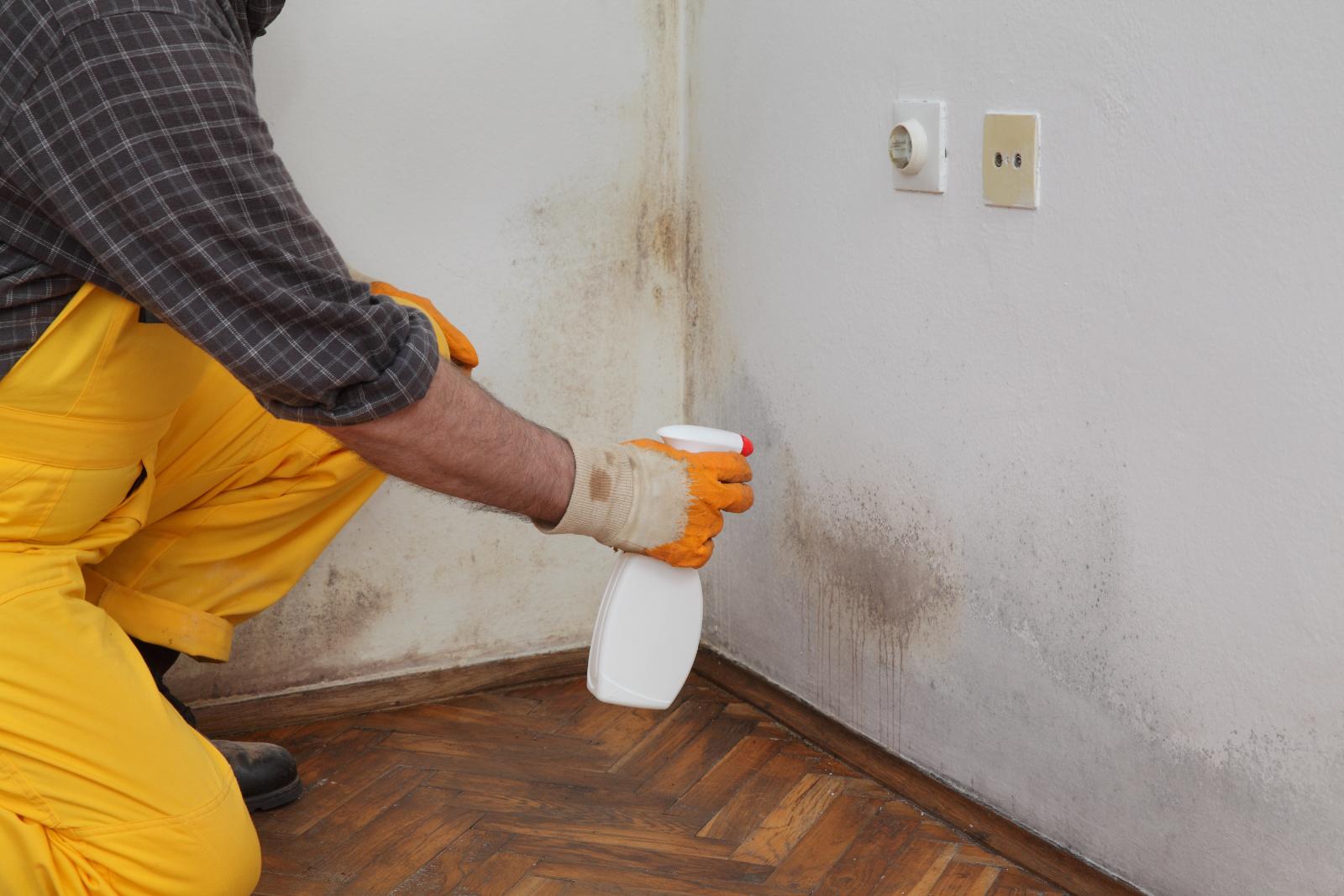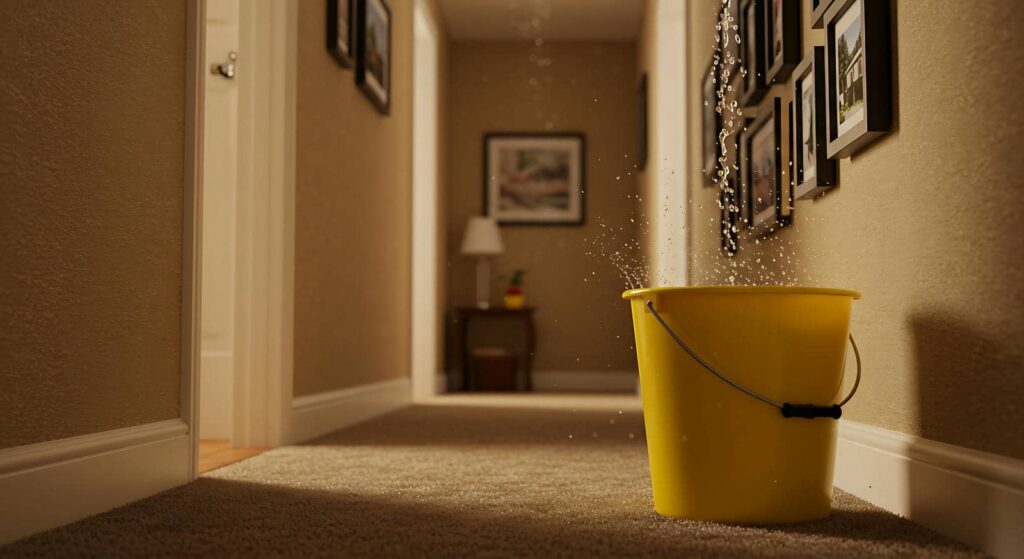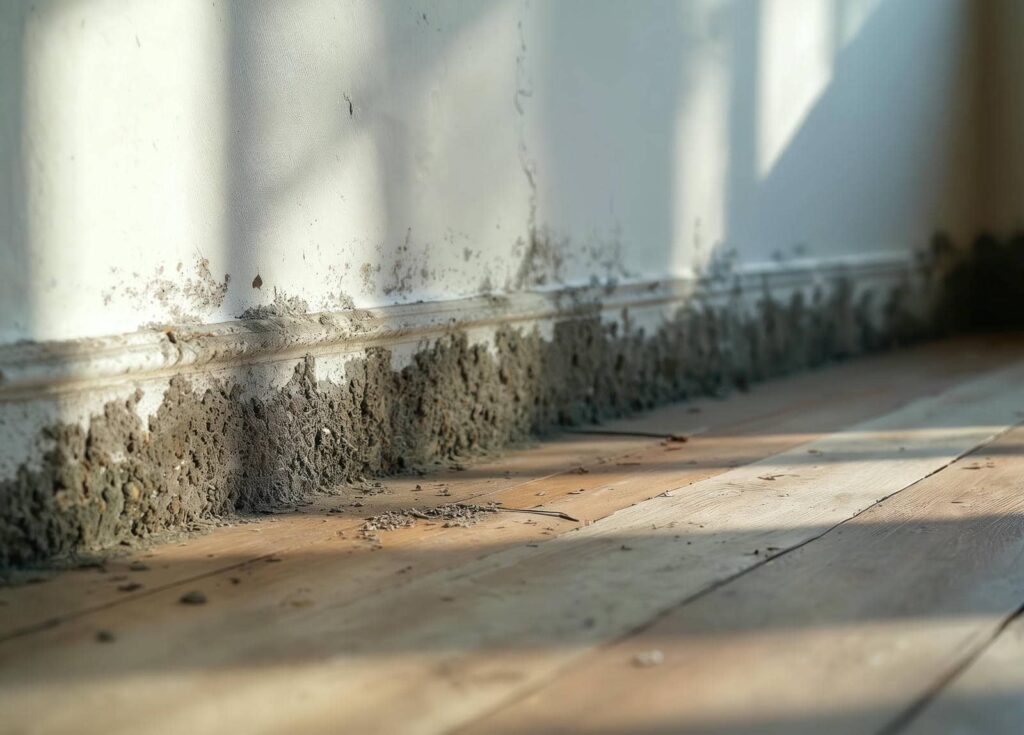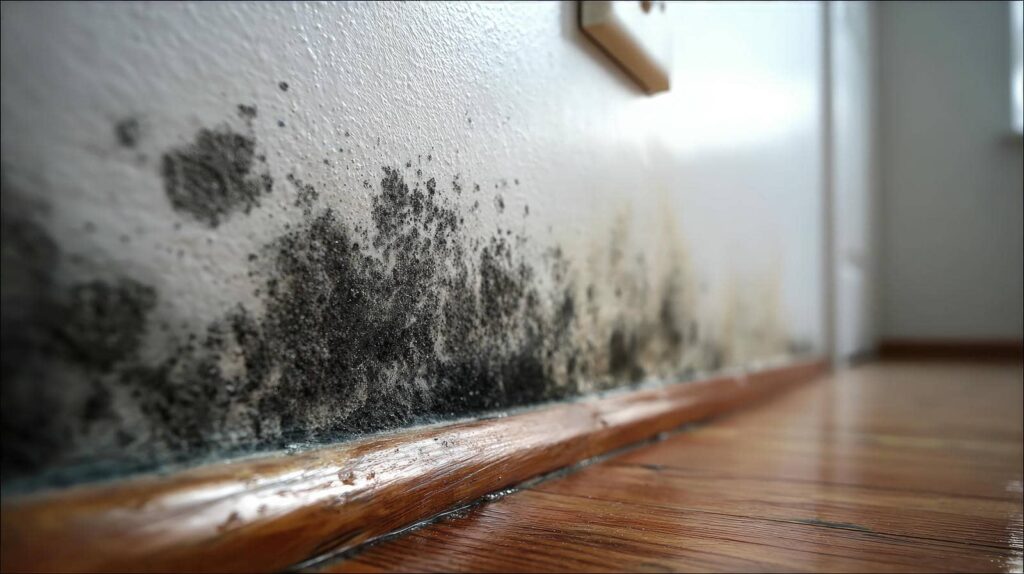Contents
In the aftermath of a flood, addressing mold growth is like finding your way through a maze; it requires a strategic approach to ensure your surroundings remain safe and mold-free. However, when faced with the looming threat of post-flood mold contamination, do you know which top 7 mold removal techniques can truly make a difference? Let’s explore the key steps that could safeguard your indoor environment and protect your well-being post-flood.
Key Takeaways
- Utilize dehumidifiers and maintain humidity below 60%.
- Conduct thorough mold testing and inspection post-flood.
- Implement containment measures and air filtration systems.
- Safely remove and dispose of mold-infested materials.
- Clean affected surfaces with proper disinfection agents.
Dehumidification and Moisture Control
To effectively prevent mold growth post-flood, prioritize dehumidification and moisture control as key steps in the restoration process. Humidity management plays an important role in inhibiting mold proliferation. Begin by using dehumidifiers to reduce moisture levels in the air, ideally maintaining indoor humidity below 60%. Proper ventilation is also essential; it guarantees good airflow throughout the affected area to aid in drying out damp surfaces. Additionally, consider utilizing moisture prevention techniques such as sealing leaks and promptly addressing water intrusion. Inspect the space thoroughly to identify sources of moisture that may fuel mold growth if left unchecked.
Maintaining a consistent humidity level and promptly addressing any moisture issues are crucial components of effective mold prevention post-flood. By diligently managing humidity levels and implementing moisture prevention strategies, you can create an unfavorable environment for mold growth. Remember, a proactive approach to humidity control and moisture prevention is key to safeguarding your space from mold infestations.
Mold Testing and Inspection
Conduct thorough mold testing and inspection to identify the extent of contamination and pinpoint areas requiring remediation post-flood. Here are four essential steps to guide you through this process:
Visual Inspection: Start by visually examining all areas for signs of mold growth, including discoloration, musty odors, and water stains. Pay close attention to hidden spaces like behind walls and under carpets.
Mold Sampling: Utilize air sampling and surface sampling techniques to collect samples for laboratory analysis. This will help in mold spore identification and determining the types and concentration levels present in your environment.
Moisture Detection: Identify and address the source of moisture that’s promoting mold growth. Without eliminating the moisture problem, mold remediation efforts won’t be effective in the long term.
Professional Assessment: Consider hiring a certified mold inspector to conduct a thorough assessment. Their expertise can provide valuable insights into the extent of contamination and the most appropriate remediation strategies based on the findings.
Containment and Air Filtration
Effective containment and air filtration are essential components to prevent the spread of mold spores and maintain a safe environment when implementing post-flood mold removal techniques. Containment measures help isolate the affected area, limiting the dispersion of mold spores to other parts of the building. Air filtration systems, such as HEPA filters, play a pivotal role in improving air quality by capturing tiny mold spores that may be circulating in the air. Here is a table outlining key aspects of containment and air filtration:
| Aspect | Description | Importance |
|---|---|---|
| Containment barriers | Erect plastic sheeting barriers to seal off the work area from the rest of the building. | Prevents mold spores from spreading to unaffected areas. |
| Negative air pressure system | Set up equipment to create negative air pressure, ensuring that air flows from clean areas to the contained work area. | Helps prevent mold spores from escaping the workspace. |
| HEPA air scrubbers | Use HEPA filters in air scrubbers to trap mold spores and other airborne particles. | Improves air quality by removing contaminants efficiently. |
Mold Removal and Disposal
When tackling mold removal and disposal post-flood, it’s essential to employ effective methods for proper handling. Efficient removal techniques must be implemented to ensure complete eradication of mold spores.
Safely disposing of mold-infested materials is a vital step in preventing further contamination.
Mold Disposal Methods
Proper mold disposal after flooding involves meticulous handling and disposal methods to prevent further contamination and health risks. When disposing of mold-infested materials, follow these steps:
Seal Off: Use plastic sheets to seal off the area to prevent mold spores from spreading.
Double Bagging: Double bag the moldy materials in thick plastic bags to contain any spores.
Labeling: Clearly label the bags as ‘Contaminated’ for proper waste management.
Professional Disposal: Dispose of the bags following local regulations or hire professionals for safe disposal.
These steps ensure that mold spores are contained and disposed of correctly, minimizing the risk of further contamination.
Efficient Mold Removal
To effectively remove mold, ensure meticulous handling and disposal of mold-contaminated materials to prevent further contamination and health risks.
When engaging in mold removal, always prioritize your safety by wearing appropriate protective gear such as gloves, masks, and goggles.
Begin by isolating the contaminated area and sealing off vents to prevent mold spores from spreading. Carefully remove all mold-infested materials, double-bagging them in thick plastic bags before disposal.
Thoroughly clean and disinfect the affected surfaces using mold prevention solutions. Remember to dry the area completely to prevent future mold growth.
Safe Mold Handling
Secure thorough containment and removal of mold-contaminated materials to mitigate health hazards and prevent further spread of mold spores. When handling mold post-flood, ensure safety by following these steps:
Proper Containment: Seal off the affected area using plastic sheets and tape to prevent mold spores’ dispersion.
Wear Protective Gear: Put on gloves, masks, goggles, and coveralls to shield yourself from mold exposure.
- Use HEPA Vacuums: Employ HEPA-filtered vacuums to clean up mold, trap tiny spores,
and prevent recirculation.
Bag and Dispose: Double-bag mold-infested materials in heavy-duty trash bags and promptly dispose of them to prevent recontamination.
Surface Cleaning and Disinfection
When addressing surface cleaning and disinfection in mold removal post-flood, it’s crucial to use effective products and techniques to prevent further mold growth. Begin by wearing protective gear such as gloves, goggles, and masks to avoid exposure to mold spores during the cleaning process.
Start by scrubbing the affected surfaces vigorously with a brush and a mixture of detergent and water to remove visible mold. After scrubbing, utilize chemical disinfection agents like bleach solutions or commercial mold removers to kill any remaining mold spores. Maintain proper ventilation during this process to prevent inhaling harmful fumes.
Once the surfaces are thoroughly cleaned and disinfected, allow them to dry completely. Use dehumidifiers or fans to expedite the drying process and prevent moisture buildup, which can lead to mold regrowth. Regularly monitor the cleaned areas for any signs of mold resurgence and promptly address any issues that arise.
Following these meticulous steps for surface cleaning and disinfection will help effectively remove mold after a flood and prevent its return.
HVAC System Inspection and Cleaning
Inspecting and cleaning your HVAC system after a flood is important to eliminate any potential mold contamination and ensure excellent indoor air quality. Here are four essential steps to make sure your HVAC system is free from mold and operating efficiently:
Duct Cleaning: Begin by inspecting all ductwork for any signs of water damage or mold growth. Professional duct cleaning may be necessary to remove any contaminants effectively.
Maintenance Check: Conduct a thorough inspection of all HVAC components, including filters, coils, and drainage systems. Replace any filters and clean coils to prevent mold buildup and promote proper airflow.
Air Quality Testing: After cleaning and maintenance, consider conducting air quality tests to verify that the HVAC system is functioning correctly and that the indoor air quality has improved.
Professional Inspection: For a detailed evaluation, consider hiring a professional HVAC technician to thoroughly inspect and clean your system, ensuring excellent performance and air quality post-flood.
Preventive Measures and Education
To enhance post-flood mold prevention efforts, prioritize implementing thorough maintenance procedures and educational initiatives. Education awareness plays an important role in mold prevention strategies. Guarantee that occupants are informed about the importance of early detection and proper moisture management. Conduct workshops or provide informational materials to increase awareness of mold risks and prevention methods. Encouraging a culture of vigilance can greatly reduce the likelihood of mold growth post-flooding.
In addition to education awareness, emphasize the implementation of preventive measures. Regularly inspect and maintain plumbing systems to prevent leaks that could lead to moisture buildup. Install dehumidifiers in areas prone to high humidity levels to control moisture. Seal cracks and crevices in walls to prevent water infiltration. By taking proactive steps to address potential sources of moisture, you can effectively reduce the risk of mold growth. Remember, prevention is key in maintaining a healthy indoor environment.
Review
Now that you have implemented the top mold removal techniques post-flood, you can rest assured that your indoor environment is safe and free from mold contamination.
By controlling moisture levels, conducting thorough testing and inspection, and following proper containment and cleaning procedures, you have taken the necessary steps to prevent mold growth and maintain healthy indoor air quality.
Stay vigilant and educated on preventive measures to keep your space mold-free in the future.




